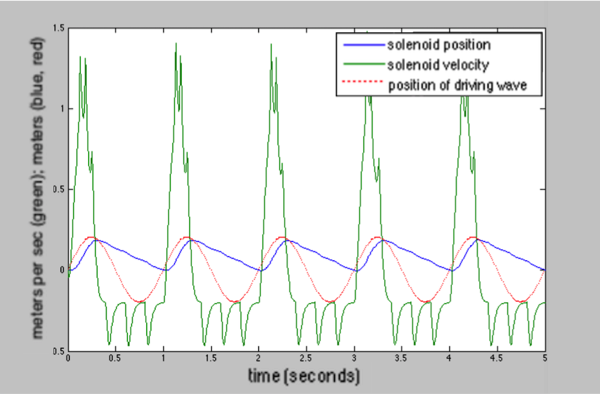Inexpensive Wave Energy Converter

Funded by Chevron support of the MIT Marine Robotics Team

There are three basic components to this generator setup-- the spar buoy, the magnets inside the spar buoy, and the solenoid-float setup around the spar buoy. The magnets are aligned in such a way to push their fields outward and maximize the magnetic flux through the moving solenoids around them. This generates voltage through the solenoids, and with a load resistor in a circuit, generates watts. The waves lie between the above-water float and the submerged float, as they are to push the solenoid- float setup against the main shaft. This generator setup is optimal because it avoids using moving watertight seals, which are often the downfall in other long-term underwater systems. This particular prototype produced 6.1 watts continuously in a lab, at 49 volts across a 330Ω bleeder resistor. The parts cost roughly $350, but if mass-produced, it could be built far better and cheaper.

Student POC:
- Taylor Njaka (njaka@mit.edu)



- Top Left: Construction of the six interior solenoids for the small generator. Solenoids were wrapped in opposite directions to decrease inductive effects. A plastic sheet was placed between solenoids 3 and 4 to help lock it to a float before deployment.
- Top Middle: Versatile float containing solenoid coils
- Top Right: Small spar buoy containing NdFeB magnets for the linear takeoff system


- Matlab simulation of the generator through 5 waves


